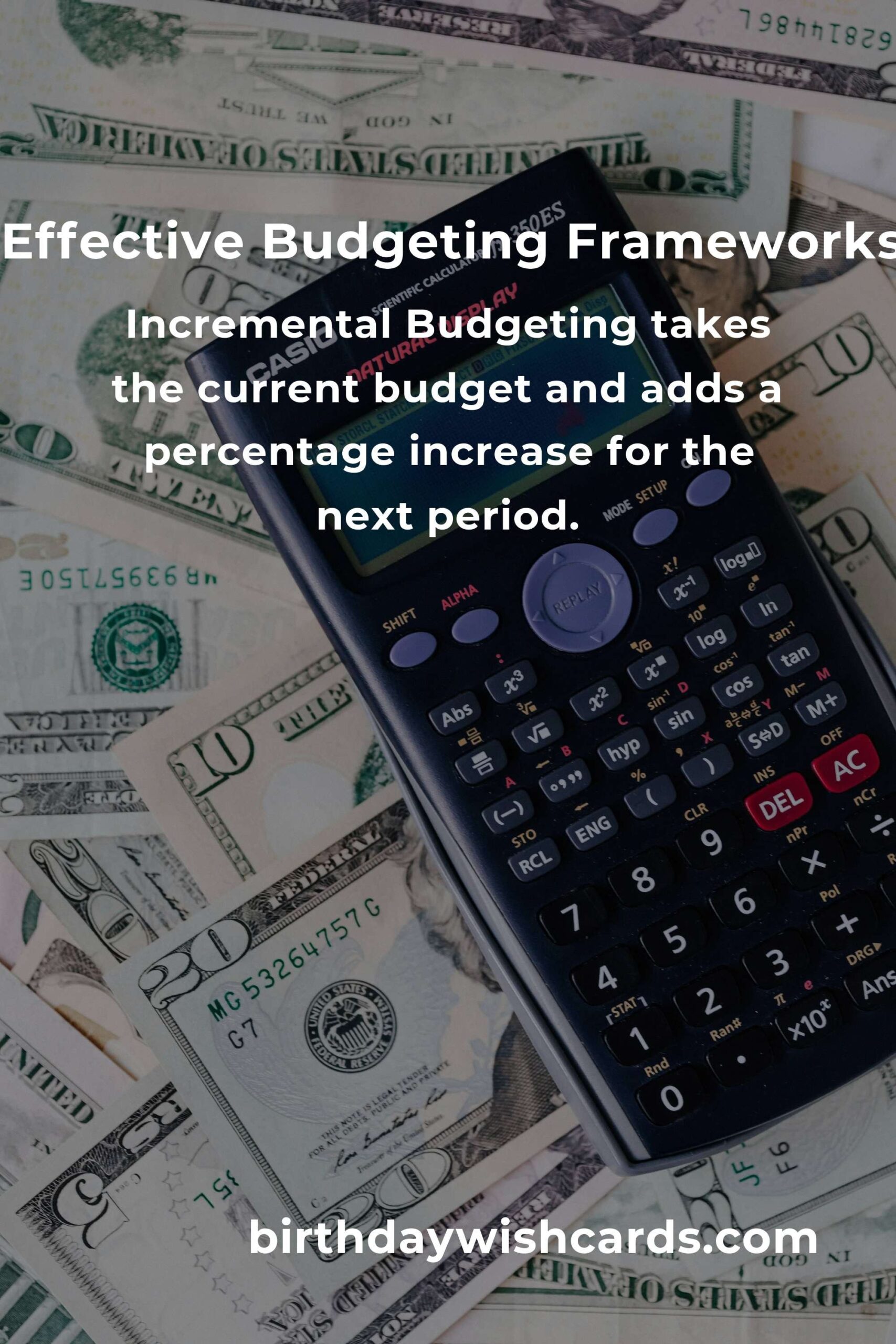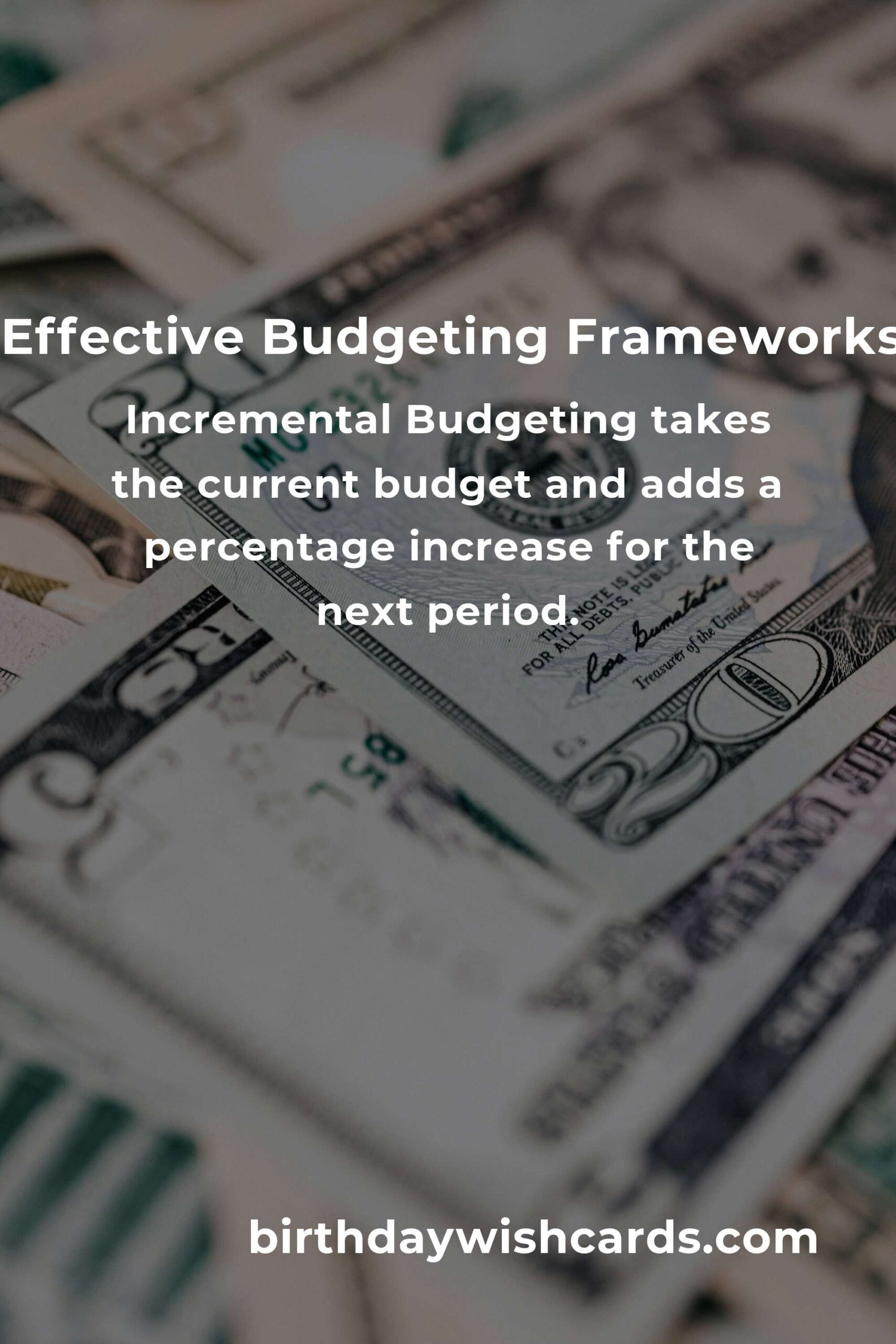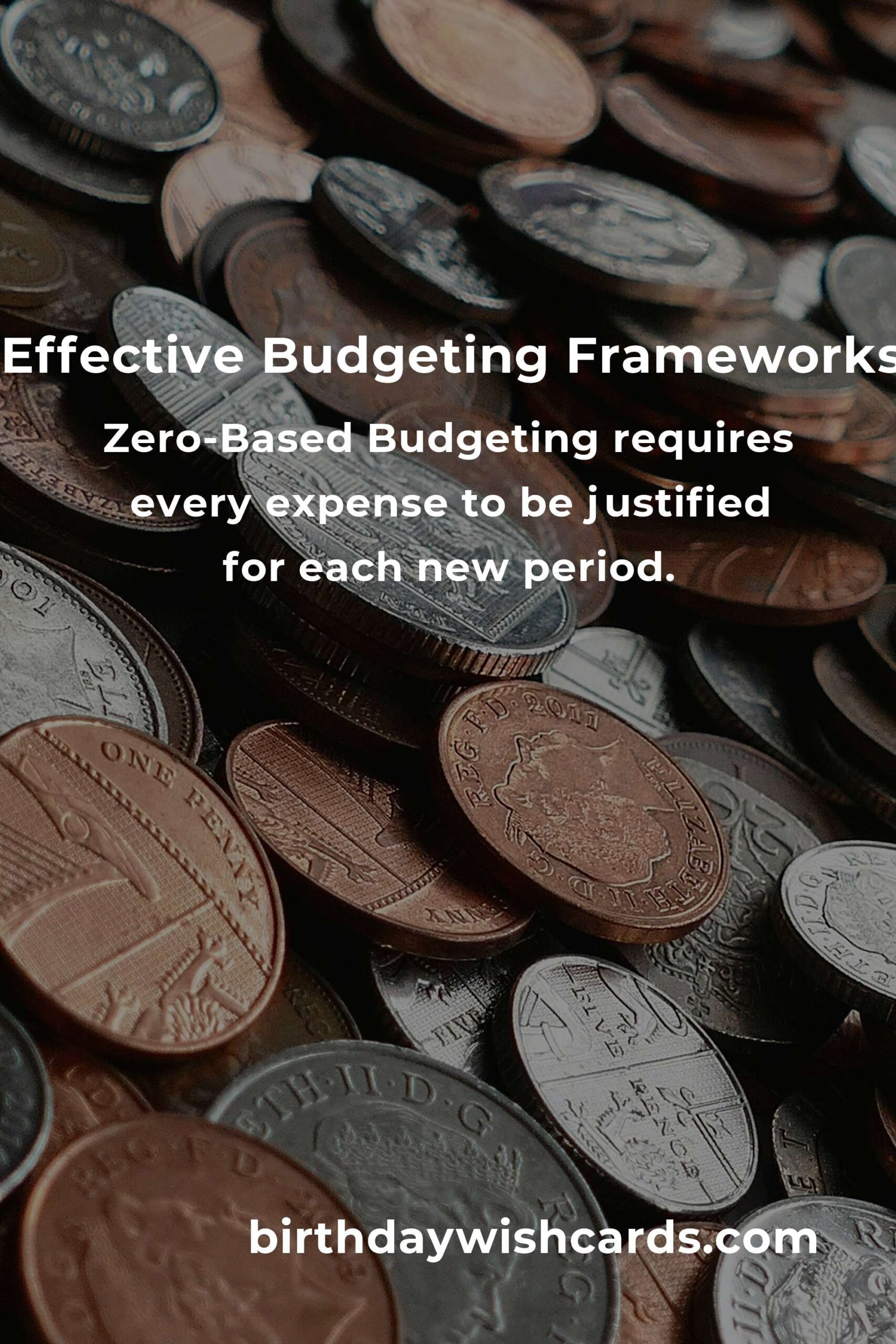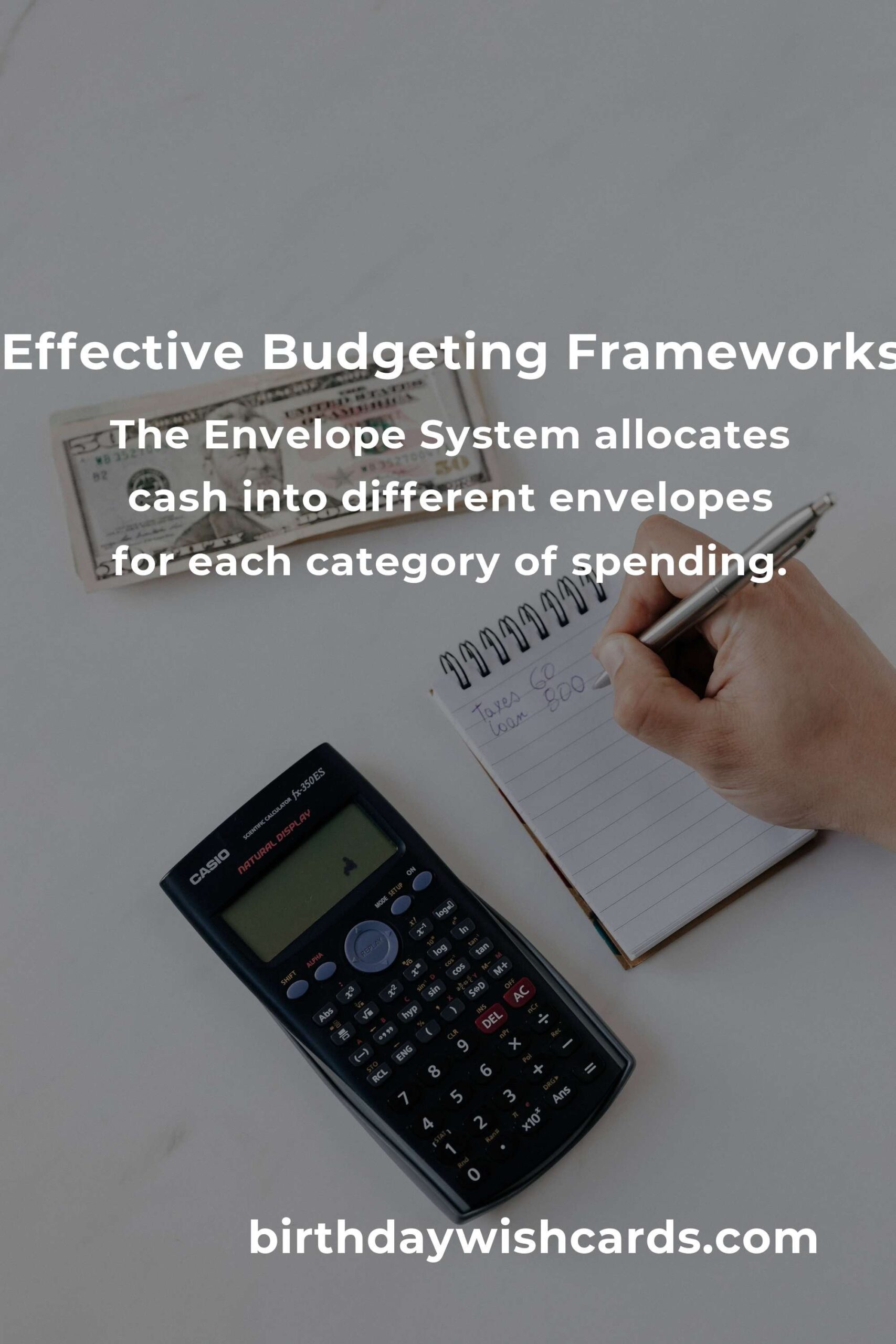
Creating a budget can often feel like a daunting task, especially if you’re not sure where to start. However, having a solid budgeting framework can provide a clear roadmap to managing money effectively. Whether you’re an individual or managing a business, selecting the right budgeting framework is crucial for financial success. In this article, we will explore 29 budgeting frameworks that can help streamline your financial planning.
1. Zero-Based Budgeting
Zero-Based Budgeting (ZBB) is a method where every expense must be justified for each new period. Starting from a ‘zero base,’ every function within an organization is analyzed for its needs and costs. This type of budgeting helps in identifying wasteful expenditures and is excellent for cost management.
2. Envelope System
Popularized by Dave Ramsey, the envelope system is a cash-based budgeting method. You allocate cash into different envelopes for each category of spending. Once the cash is gone, spending in that category stops, enforcing discipline.
3. 50/30/20 Rule
This intuitive budgeting framework divides your income into three categories: 50% for needs, 30% for wants, and 20% for savings. It’s a simple yet effective way to manage finances without getting into complex spreadsheets.
4. Incremental Budgeting
Incremental budgeting involves taking the current period’s budget and adding a percentage increase for the next period. While simple, it may lead to unnecessary spendings as it often overlooks a detailed examination of expenses.
5. Activity-Based Budgeting
Activity-Based Budgeting (ABB) focuses on the costs of activities necessary for delivering products or services. This approach helps businesses align their resources with their strategic objectives, ensuring effective resource utilization.
6. Priority-Based Budgeting
This framework involves allocating funds based on the priority of each department or project. It ensures that the most critical areas receive adequate funding, promoting strategic alignment of funds.
7. Rolling Budget
Rolling budgets are continuously updated to reflect changes in an organization’s financial situation. This dynamic approach allows businesses to adapt quickly to market changes and is particularly useful in volatile industries.
8. Performance-Based Budgeting
Performance-Based Budgeting (PBB) allocates resources based on program performance and outcomes. This framework encourages accountability and ensures that funds are directed towards efficient programs.
9. Line-Item Budgeting
Line-item budgeting lists each category of expenditure separately, providing a clear overview of where money is being spent. It’s straightforward but may lack flexibility and creativity in financial planning.
10. Flexible Budgeting
A flexible budget adjusts or changes in response to changes in revenue. This type of budgeting is adaptable and beneficial for businesses with varying levels of production or sales volumes.
11. Value Proposition Budgeting
Value Proposition Budgeting focuses on ensuring that every dollar spent provides value to the customer or organization. It emphasizes cost-effectiveness and is ideal for businesses aiming to enhance customer satisfaction.
12. Kaizen Budgeting
Derived from the Japanese philosophy of continuous improvement, Kaizen Budgeting involves gradual and continuous cost reductions. It’s an excellent approach for businesses looking to improve efficiency and reduce waste.
13. Program Budgeting
Program budgeting allocates funds based on specific programs within an organization. This framework emphasizes program efficiency and effectiveness, ensuring that each program is adequately funded.
14. Baseline Budgeting
Baseline budgeting starts with a baseline of the previous year’s budget and makes adjustments for the upcoming period. It’s a conservative approach that helps in maintaining financial stability.
15. Forecast-Based Budgeting
This framework involves preparing budgets based on future forecasts and trends. It allows organizations to anticipate changes and prepare accordingly, making it ideal for strategic planning.
16. Capital Budgeting
Capital budgeting involves planning for long-term investments and capital projects. It helps organizations in making informed decisions about large-scale expenditures and capital allocations.
17. Responsibility Accounting
Responsibility accounting assigns budgetary responsibility to different departments or managers. This framework promotes accountability and ensures that budgetary goals are met efficiently.
18. Static Budgeting
A static budget remains unchanged throughout the budget period, regardless of changes in actual activity levels. While simple, it might not be suitable for businesses with fluctuating revenues.
19. Traditional Budgeting
Traditional budgeting involves setting a fixed budget for a specific period. It’s a time-tested approach but may not accommodate unforeseen changes effectively.
20. Internal Control Budgeting
Internal control budgeting focuses on establishing strong internal controls to prevent fraud and errors. It ensures that financial reporting is accurate and reliable.
21. Participative Budgeting
Participative budgeting involves input from employees at all levels in the budgeting process. This collaborative approach increases commitment and motivation toward budgetary goals.
22. Target Budgeting
Target budgeting sets specific financial targets and allocates resources to meet them. It’s goal-oriented and aligns resources with strategic objectives.
23. Hybrid Budgeting
Hybrid budgeting combines elements from different budgeting frameworks to suit specific organizational needs. It’s versatile and can be customized for various financial scenarios.
24. Contingency Budgeting
Contingency budgeting involves setting aside funds for unexpected expenses or emergencies. It acts as a financial safety net, ensuring stability during unforeseen events.
25. Project-Based Budgeting
Project-based budgeting allocates funds based on specific projects. It ensures that each project is well-funded and aligns resources with project objectives.
26. Outcome Budgeting
Outcome budgeting allocates resources based on desired outcomes and results. It emphasizes achieving measurable objectives and is ideal for results-driven organizations.
27. Resource Consumption Accounting
Resource Consumption Accounting (RCA) focuses on resource usage and efficiency. It’s a strategic approach that enhances decision-making and resource optimization.
28. Lean Budgeting
Lean budgeting applies lean principles to financial management, focusing on eliminating waste and increasing value. It’s effective for organizations aiming to enhance operational efficiency.
29. Scenario Planning Budgeting
Scenario planning budgeting involves preparing for different future scenarios and potential challenges. It’s a proactive approach that helps organizations adapt to various financial situations.
Choosing the right budgeting framework depends on your specific financial goals and organizational needs. Each framework offers unique advantages, and understanding them can help you make informed decisions for better financial management.
Zero-Based Budgeting requires every expense to be justified for each new period. The Envelope System allocates cash into different envelopes for each category of spending. The 50/30/20 Rule divides income into needs, wants, and savings. Incremental Budgeting takes the current budget and adds a percentage increase for the next period. Activity-Based Budgeting focuses on the costs of activities necessary for delivering products or services.
#Budgeting #FinancialManagement #MoneyManagement #FinanceTips #Budget












